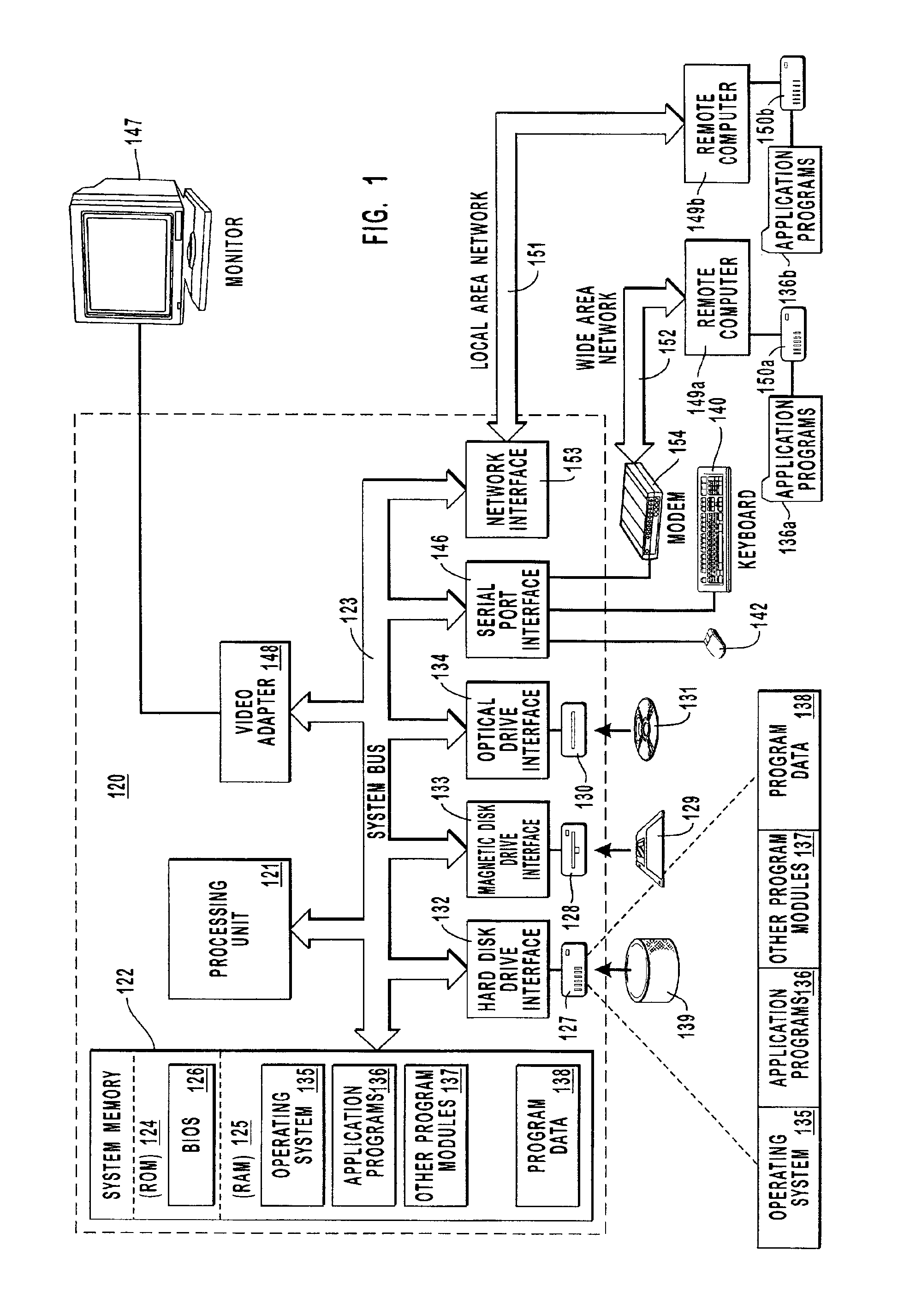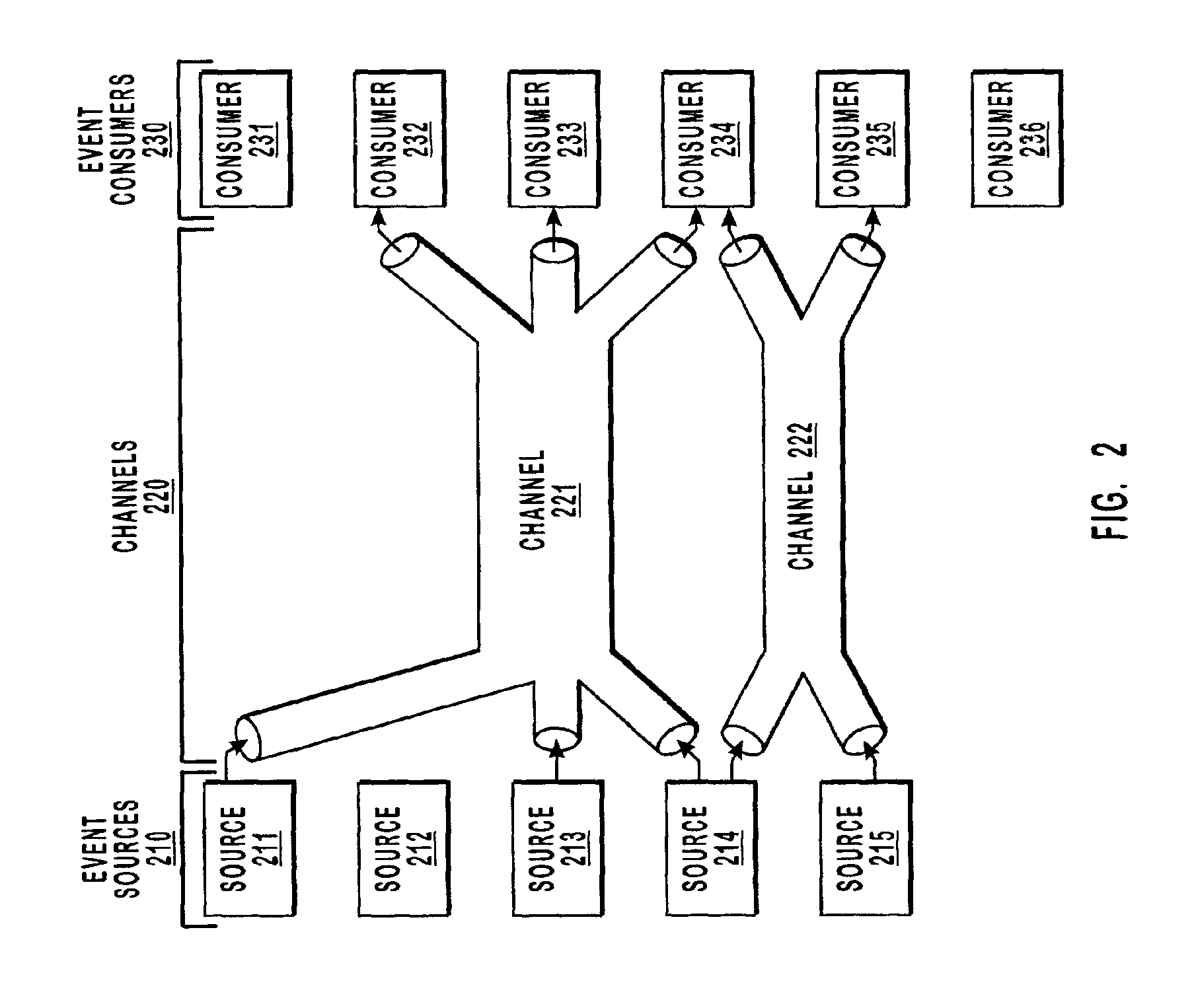Flexible subscription-based event notification
a subscription-based, event-based technology, applied in the field of event-based event notification, can solve the problems of inefficient synchronous access to information, user or application would not typically know to request information, computer error, etc., and achieve the effect of reducing the average processing resources and efficient filtering operation
- Summary
- Abstract
- Description
- Claims
- Application Information
AI Technical Summary
Benefits of technology
Problems solved by technology
Method used
Image
Examples
Embodiment Construction
[0028]The present invention extends to methods, systems and computer program products for performing subscription-based notification using event channels that each correspond to a particular scope. Each channel manages notifications through the use of a schema definition. The event subscriptions received from the event consumers uses a statement that identifies the position that any desired event notification would take according to the schema definition. The event subscription may also identify characteristics or attributes associated with events of interest at that position.
[0029]The channel then receives event notifications from one or more event sources. The event notification may take the form of an XML fragment. The channel then determines the position that the XML fragment would take in the schema definition. The channel matches the event notification against the subscription. In particular, the channel determines whether the position and attributes of the event notification ...
PUM
 Login to View More
Login to View More Abstract
Description
Claims
Application Information
 Login to View More
Login to View More - R&D
- Intellectual Property
- Life Sciences
- Materials
- Tech Scout
- Unparalleled Data Quality
- Higher Quality Content
- 60% Fewer Hallucinations
Browse by: Latest US Patents, China's latest patents, Technical Efficacy Thesaurus, Application Domain, Technology Topic, Popular Technical Reports.
© 2025 PatSnap. All rights reserved.Legal|Privacy policy|Modern Slavery Act Transparency Statement|Sitemap|About US| Contact US: help@patsnap.com



